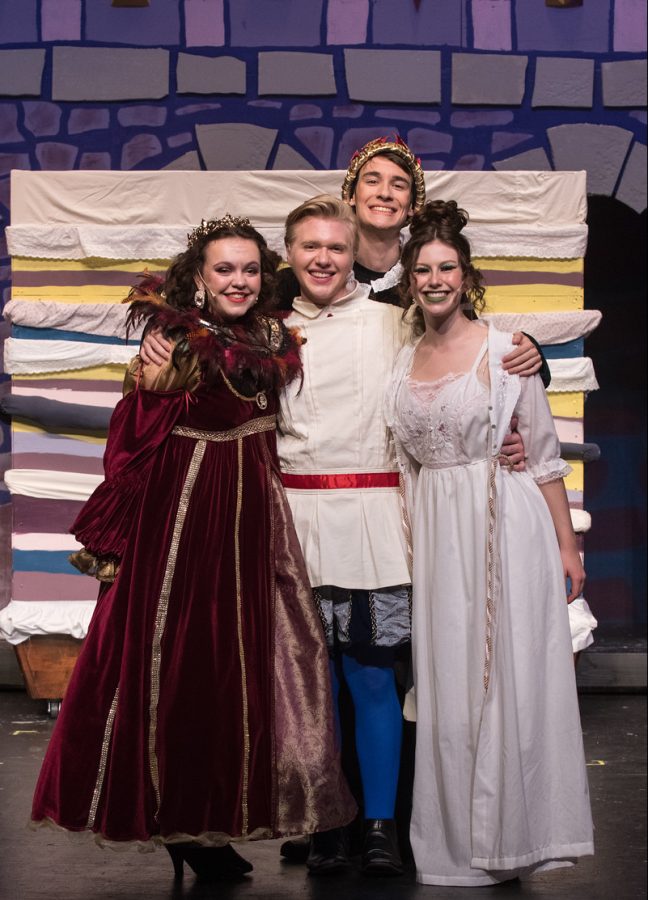The teenage experience needs to be portrayed by teens in musical theater
WVHS students pose after a performance of “Once Upon a Mattress.” From left to right: Lizzie Hall as Mystic Old, Chance Kirk as Prince who grows on you over time, Wyett Butler as Comedic Relief, and Claudia Molatore as Smart Princess in need of husband.
A young rising star of the high school theater program prepares to join the final production in their high school career.
They hope that their last show can finally be something fun and engaging like Mama Mia or Chicago; maybe they will really push the envelope and perform Heathers. The announcement is posted and everyone rushes to see what the show will be and it’s . . . Descendents the Musical, a Disney production.
Disney musical theater shows are not inherently bad, and in many cases they are very enjoyable and well suited for all audiences.
However, Disney shows have the same types of characters: Princess who is independent but falls in love because that is her only option; young prince who maybe isn’t that bad once you get to know him; mystic old character; and comedic relief side character.
All of these characters are very fun to play a couple times, but they’re not representative of the diversity of characters that should be available to adolescents.
Professional actor, musical director, and Artistic Director of Bridgetown Conservatory, Rick Lewis, also voices his concerns about the literature available for adolescents.
“There are some contemporary shows that MUST be portrayed by teens, such as Spring Awakening. That production would not be as effective without a young cast. But it’s not a school production at all– the subject matter is a bit mature, but so is a teenage existence!” says Lewis.
This perpetual limbo that high school students have to endure stifles their ability to meaningfully participate in the industry at age appropriate levels. Although these shows are about young adults and adolescents, the characters are meant to be played by adults on Broadway.
The shows that truly represent the teenage experience are perceived as too “mature” to be played by teenagers in a high school production.
Seniors at Wilsonville High School, Chance Kirk and Natalie Caddell, agree with Rick Lewis’ assessment of musical theater shows for adolescents.
Kirk commented, “I think that there’s an effort that’s made to try to make shows for high schoolers, but . . . I do think that there is a lack of material for us.”
This lack of material is detrimental to the adolescent theater experience. It deprives adolescents of the most important part of theater: the ability to relate to the character in order to tell a compelling and convincing story.
Natalie Caddell stated, “When your main purpose in theater is to entertain the audience, it gets to you sometimes when everything seems redundant, and I can’t find a way to bring something new to the show.”
Engaging, new material for adolescents would greatly improve their ability to relate to who they are portraying on stage and enhance their overall performance. Redundant characters and material stunts the growth of young actors and exaggerates the adolescent feeling of not fitting in.
Browday is known for shows like Dear Evan Hansen that wrestle with the multitude of real life issues facing teens. Although this show is about young adults, the characters are portrayed by adults, implying the teenage experience is too mature for the average high schooler.
Why is it that the teenage experience is deemed too mature for teens? Theater has evolved into an activity known for its ability to accept and love all types of people, yet the deficit of realistic, age-appropriate, material available for adolescents has created an environment that continuously puts people into boxes.
More rich, age appropriate and diverse shows must be made for adolescents and adolescents need to be able to portray those characters. Failing to turn our focus to generating this rich material and leaving this void is a disservice to our young theater stars both as individuals and performers.












